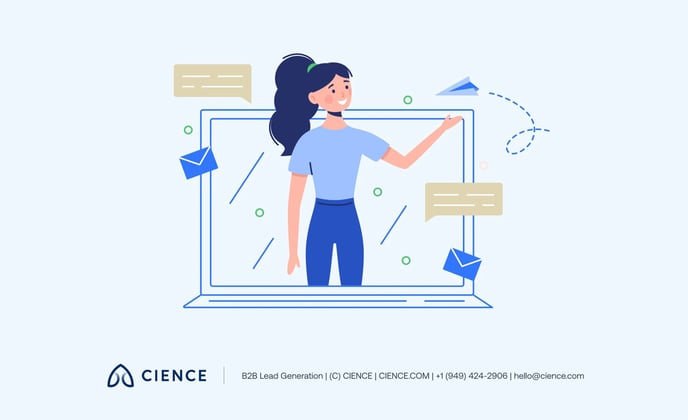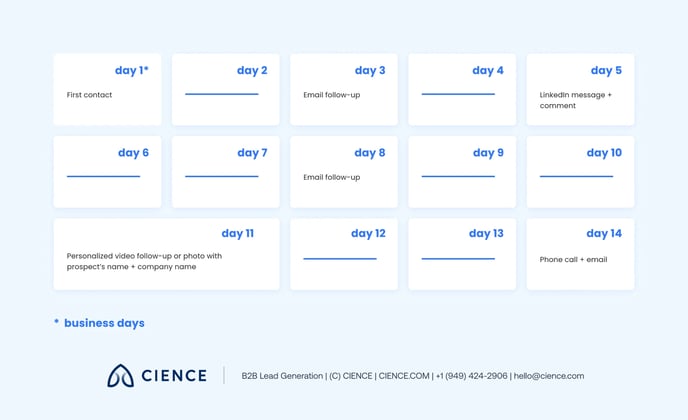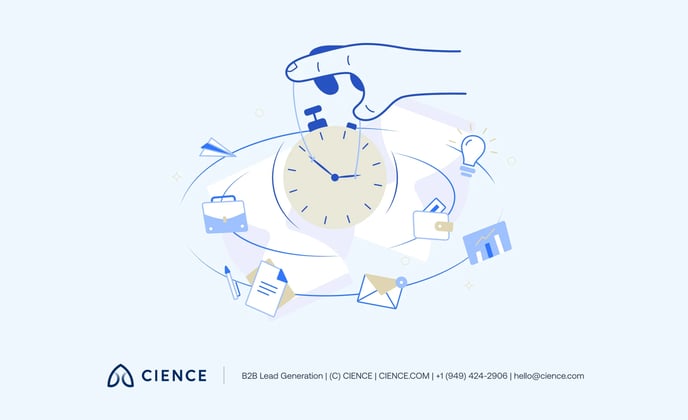Best SDR Practices & Tips to Adopt in 2024
Ten years ago, the daily routine of a sales development representative (SDR) was simple and clear: Make a phone call, send a few emails, leave a few voicemails, receive an answer, and move to the next contact. Their role was limited to just closing deals, and even with so many SDR tips available on the Internet, it was never an easy task.
As the sales process got more sophisticated throughout the years, the SDR position has become more complicated as well. Yes, their main goal remains the same—to close as many deals as possible. But on top of that, SDR strategies included needing to be the connectors between two sides of the sales process—the company and the prospect.
When an SDR contacts a prospect on behalf of your organization, they are not just trying to nurture more leads into your sales pipeline. First and foremost, they represent your business. On the one hand, they form the first impression about you and speak your values. On the other hand, they cut out unqualified prospects and make sure that the prospects who go further down the sales funnel are truly interested in your services. Without well-trained SDRs, the whole sales process would be very messed up and inefficient.
However, to stay up-to-date, you need to invest in the professional development of your team. It is in your business's interest that your SDRs adopt the best practices to deliver quality services to your clients and do their jobs at the highest level.
What Are the Best SDR Practices?

At CIENCE, SDRs have sent more than 6.5M emails, completed more than 2.5M calls, and contacted more than 1.4M prospects going into the new year. Doing all of these tasks and still staying sane requires developing some strong soft and hard skills to do the job well. We’ve gathered the top five best SDR tips and SDR strategies that will make your SDR’s work life much easier.
1. Always personalize.
Seriously, if you still don’t personalize your calls, emails, landing pages, do it immediately. This is the trend that won’t go old any time soon in SDR best practices. Did you know that 66% of customers expect companies to understand their needs and expectations? This means that before making the first contact, your prospect already wants you to know who they are and what exactly they need.
Therefore, cold-hearted pitching throughout reading a script or sending a standard template won’t work anymore. You need to demonstrate that you know precisely what your prospect wants, and even more importantly, how they can achieve it.
To do so, before sending anything, you should conduct well-prepared research about your prospects. To help you out here, it’s extremely beneficial to create the ideal customer profile and buyer persona for your business. This way, the personalization process for each prospect won’t be so time-consuming. But even if it is still longer than you’d like it to be, remember that quality always beats quantity.
2. Use video prospecting.
Video prospecting isn’t just a nice combination of words—it’s also one of the best SDR practices you can adopt. Using a short, one-minute video allows SDRs to present themselves, deliver the value message to the prospect, and request scheduling a follow-up call for a later date.
CIENCE SDRs actively use this practice in their daily routine as a perfect way to kill two birds with one stone: deliver an important message and intrigue the prospect before a face-to-face call.
Video prospecting doesn’t require special acting or technical skills from SDRs. All they need is a simple laptop camera and a little bit of creativity to express themselves. A nice smile and a positive attitude will go a long way.
3. Follow a strict sequence of outreach.
SDRs complete dozens of different actions, the majority of which are repeatable from day to day. They have to fill up task management in CRM, conduct research for personalization, write a few emails and follow-ups, make calls, do some social touches, and conclude their job using reports and statistics. Those are quite a few tasks to remember every day.
At CIENCE, SDRs complete more than 5,000 activities per month. This requires a systematic approach to even the most creative processes. That is why another best practice for SDR outreach is to create a strict sequence of contacts made with each prospect so that every prospect receives the right amount of follow-ups through different channels. This sequence also helps SDRs keep track of tasks on a daily basis and not get lost in all the processes.
A typical outreach sequence at CIENCE looks like this:

After the first message is delivered, SDRs keep track of each contact for at least twelve more days (or less, if they receive an answer). These schedules are a great way to help SDRs keep their performance high and hit their revenues easier.
4. Be empathetic to your prospect’s needs.
Here goes an almost mandatory SDR tip: Even though most of the SDR processes could be automated, there is something that no machine can substitute—a human touch. Chatbots can qualify a lead, emails can be sent without SDRs pressing a button, and calls can be made without people dialing the number. But the client’s loyalty cannot be won without an SDR’s diligence.
During the outbreak of coronavirus last year, Zoom CEO Eric Yuan, one of the very few businesses that actually profited during the pandemic, was asked why they didn’t move free users into paid customers. He replied that “empathy, humanity, and support for each other is more important than revenue, than growth.” Because they didn’t take advantage of the situation and instead allowed everyone to keep using the platform for free, they actually received more loyal users than ever. And in B2B, an average 5% increase in customer retention can boost a company's profitability by 75%!
The Zoom case proves that calculations and pure rational thinking aren’t always the best choice. B2B is still about people. And with people, the best SDR strategy is to be empathetic, become a good listener, and know when it is worth giving up something small (if it’s either a little discount or just a longer talk than needed) to get something even bigger—a loyal customer.
5. Adapt to changes quickly.

A recent report by Bridge Group for SDRs demonstrated that this role keeps changing from year to year. The COVID-19 pandemic has catalyzed these changes even more. SDRs needed to quickly adapt to the work-from-home routine, become avid users of different technological tools, and shift to video talks instead of in-person meetings.
People who are slow at accepting the new reality will have a hard time performing well in sales. The last year proves that one of the best practices for SDRs is being able to have resilience and adapt to the new environment.
The best advice to all SDRs still struggling to adapt is to remember that the harder it is at the beginning, the more glorious the victory at the end. So, don’t give up. Use these SDR tips to deliver your best performance.
Keep Your Revenues Up
Sometimes, keeping up with all SDR trends is harder than it seems. Adopting best practices takes a lot of time and effort from both SDRs and their managers. In some cases, outsourcing a team of SDRs can be both cheaper and more efficient. Decide what works better for you and keep improving your SDR’s performance.
A Few (Related) Sales Posts
 Read full post: 20 B2B Social Media Content Ideas for 2024
Read full post: 20 B2B Social Media Content Ideas for 2024
20 B2B Social Media Content Ideas for 2024
 Read full post: Buyer's Journey: Building the Right Path in B2B Sales
Read full post: Buyer's Journey: Building the Right Path in B2B Sales



 Read full post: 10 Best Ways to Increase B2B Sales
Read full post: 10 Best Ways to Increase B2B Sales